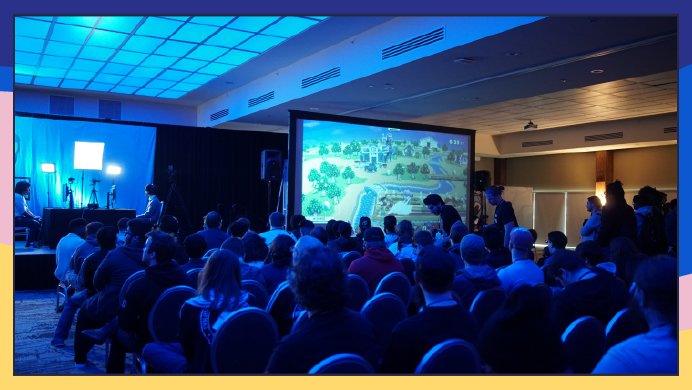Off-the-shelf courses can be a good start to meeting basic training needs, but there are topics where you need more impact, more clarity, more behavior change, more retention, more about how you do things, just…more. That requires a custom solution. Luckily, custom solutions don’t necessarily require starting from scratch. Here are 5 ways to extend the usefulness of off-the-shelf courses and transcend their limitations by adapting them into custom eLearning solutions.
1. Give Context
Context answers the question, “How does this relate?”. Being generic, off-the-shelf courses are inherently limited in terms of the context they provide. Context orients learners so they can settle in and pay attention, increases the credibility of the content, clarifies what’s really expected of learners (especially important for behavior change), and boosts retention.
Start by putting yourself in the learner’s shoes and answering how your off-the-shelf module relates to:
- Things I already know and do
- My job, career, and upcoming performance review
- Our company and how we do things here
The context could look like:
- A short intro video from another employee, anyone from a peer to the CEO, explaining why this is important
- An animated eClip
- A personalized learning map that shows how this piece fits into the curriculum for this learner or role
- Beyond eLearning, consider simple and effective face-to-face elements like “lunch and learn” gatherings featuring ‘Frequently Asked Questions’ and group discussion
2. Focus On Applying Learning
It’s common for off-the-shelf training to focus on delivering information. And information is important. But to make the leap from knowledge to behavior change, learners need more. Off-the-shelf modules can be enhanced significantly with activities where learners integrate and apply the information they just learned.
For example, a manufacturer provides off-the-shelf training on their process control equipment. After completing the module, do learners just know things about the equipment? Or do they also make better decisions about adjusting control parameters for better outcomes? The missing link here between knowledge and behavior change might look like:
- Case studies from real life safety incidents
- Microlearning to boost critical thinking skills
- Gamified simulations where employees practice adjusting parameters and seeing real-time impacts of their decisions
3. Add Emotional Content
Emotion makes content personal, makes learners care and pay attention in ways that strictly cognitive material does not. Emotion also boosts content encoding into memory, which improves learning and retention. Monica Savage discusses the role of emotion in cognition and learning design in the IDEA Model.
Including emotion, along with cognitive and social content, is not about adding BIG emotion, especially not strong fear and anger, which, while memorable, obviously can be disruptive and undesirable for other reasons. Instead, simply recognize the role of emotion in all human decision making, learning, encoding, and recall, and be mindful to use subtle emotional cues to keep learners engaged.
In this animation, colors associated with the emotions of calm and alarm are used to reinforce which behaviors are safe versus unsafe.
Whether you’re designing an animation, picking colors for an infographic, or setting the tone for an email, consider how emotion can enliven and reinforce the learning experience.
4. Add Hands-On Experience, And Make It Social
Custom blended solutions don’t have to be strictly online. If you are willing to extend your blend beyond the online world, hands-on experience is a particularly powerful way to help learners integrate and apply their learning. Adding a social element can address even more objectives at once. One well designed experiential exercise with social elements can give context, allow learners to integrate and apply knowledge, add motivation to change ongoing behavior, and help employees feel connected and valued by the company.
As companies rely ever more heavily on online training, many people struggle to offer hands-on experiences, especially with social elements. But their potential for impact makes it worth looking for opportunities to incorporate them as one element in your blend.
For example, imagine you’re shown a geometry formula in an off-the-shelf WBT course. To test your comprehension, you’re given a word problem. You plug in numbers on the screen and calculate the square footage of a room. “Ding! That is correct.” This generic learning check is mildly interactive and could be in any off-the-shelf course. It’s not terrible, but it’s also not very memorable.
Now imagine after you complete this same off-the-shelf module, you receive an assignment. You work with a team of two other people to measure three rooms, draw proportional floorplans, and figure both the square feet and cubic feet of the spaces—and then determine if a large, irregularly shaped piece of equipment commonly used in your company could be installed and operated safely in each of the rooms. That is much more memorable, and the consequences of getting the math right or wrong are much clearer and more specifically linked to individual behaviors.
Actively integrating and applying information through hands-on experiences grounds and connects learning, especially when it involves physical motion, multiple senses, other people, and specific situations and elements relevant to the learner and his or her job.
5. Add Supporting Materials To Fight The Forgetting Curve
Off-the-shelf training is often a once-and-done event. After it’s over, learners go back to the job and immediately start forgetting. Over just a few weeks, the forgetting curve erases much of the knowledge learners walked out with.
On the job performance support materials can reinforce learning, remind learners how to apply it, and also remind them why it’s important to do so. Examples of on the job support materials:
- An email campaign featuring quick tips
- Microlearning videos
- An infographic to post at a desk or work station
- Searchable online reference materials for seldom-used procedures
- Invitation to join discussion threads on a community of practice portal
Remember, when you need to adapt off-the-shelf courses to a custom learning solution, start with designing a blended solution. As you design and build, these five tips will add bang for your buck:
- Give context.
- Focus on applying learning.
- Add emotional content.
- Add hands-on experience, and make it social.
- Add supporting materials to fight the forgetting curve.
And if you need help formulating your design, don’t hesitate to contact us.







